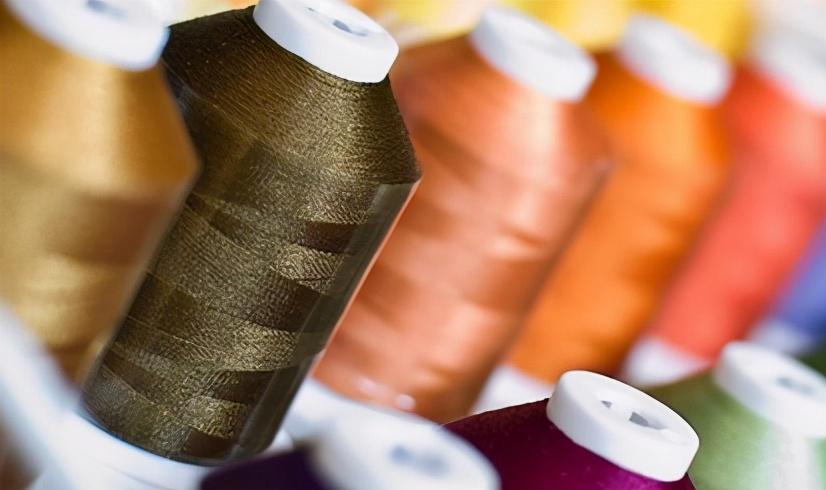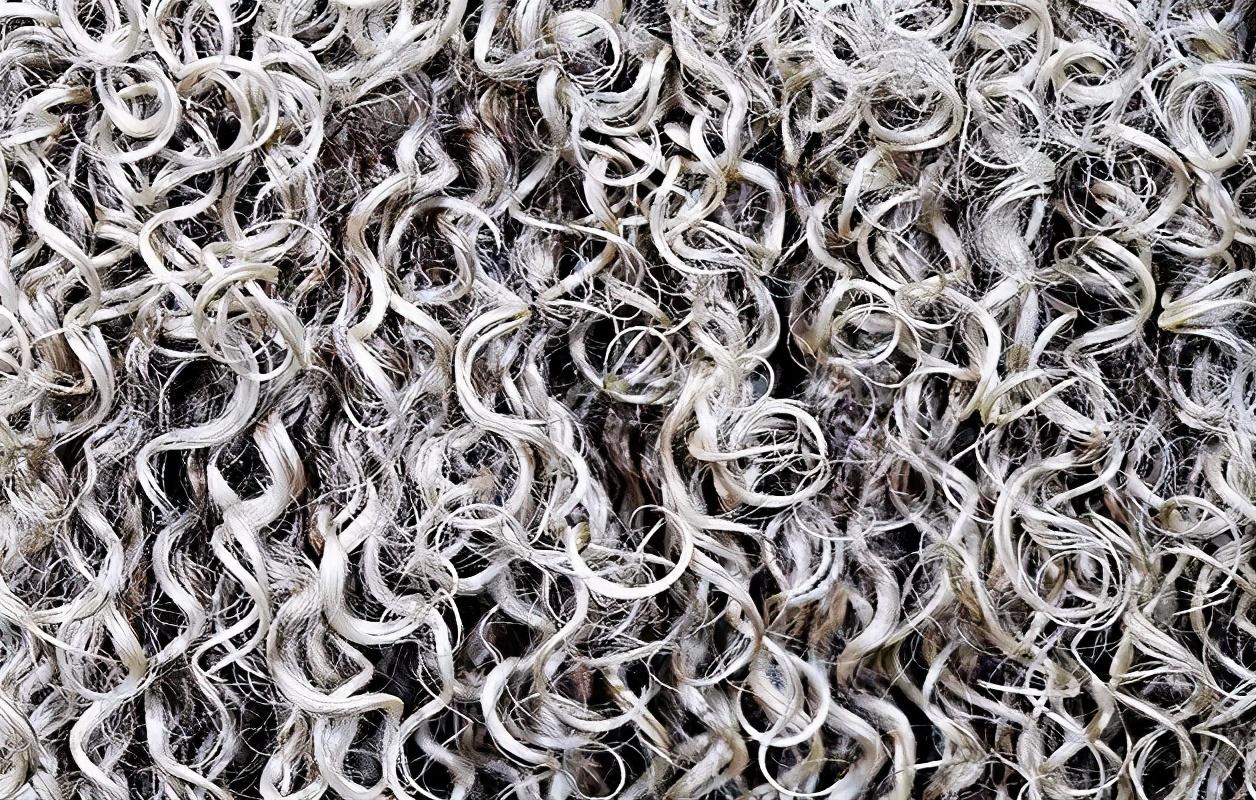If you don’t even understand the most basic textile fibers, what else are you doing?
Today’s article will tell you several basic properties of fiber, read it!
You will have more confidence to raise your salary than those who have not seen it~
1. Hygroscopic properties of fibers
When textile fibers are placed in the air, they will continuously exchange water vapor with the air. That is, the textile fibers continuously absorb water vapor in the air, and at the same time, they also continuously add water vapor to the air. Release water vapor.

The ability of textile fibers to absorb or release water vapor is called the hygroscopicity of the fiber. Hygroscopicity is one of the important physical properties of textile fibers.
The hygroscopicity of textile fibers has a certain impact on the shape, size, weight, and physical and mechanical properties of textile fibers, which also affects their processing and use performance.
The moisture absorption capacity of textile fibers also directly affects the wearing comfort of the fabric. Fibers with high hygroscopicity can easily absorb sweat discharged by the human body, regulate body temperature, relieve dampness and stuffiness, and make people feel comfortable. Therefore, attention should be paid to the hygroscopic properties of fibers in commercial trade, fiber performance testing, textile processing and textile selection.
Among the common textile fibers, wool, hemp, viscose fiber, silk, cotton, etc. have strong moisture absorption capabilities, while synthetic fibers generally have poor moisture absorption capabilities. Among them, vinylon and nylon have slightly lower moisture absorption capabilities. Well, acrylic is worse, polyester is even worse, and polypropylene and chlorine have almost no moisture absorption.

At present, synthetic fibers with poor hygroscopicity are often blended with natural fibers or viscose fibers with strong hygroscopicity to improve Moisture absorption capacity of textiles.
In addition to the hygroscopicity of fibers, the water absorption of fiber materials is also closely related to the wearing comfort of clothing fabrics. The water absorption of fibers refers to the ability of fibers to absorb liquid water.

2. Mechanical properties of fibers
Textile fibers undergo various deformations under the action of various external forces. The properties are called the mechanical properties of textile fibers. External forces include tension, compression, bending, torsion, friction and other forms.
The mechanical properties of textile fibers should include fiber strength, elongation, elasticity, wear resistance, elastic modulus, etc.
Strength of fiber: The strength of fiber refers to the ability of fiber to resist damage by external forces. It determines the durability of textile products to a large extent.
The wear resistance of fibers: During the processing and actual use of fibers and their products, wear is caused by constant friction. The wear resistance of fibers refers to the ability of fibers to withstand external wear. . The abrasion resistance of fibers is closely related to the fastness of their textile products. The quality of wear resistance is an important indicator of the wearing performance of clothing fabrics. The wear resistance of fiber is related to the macromolecular structure, supramolecular structure, elongation at break, elasticity and other factors of the fiber.
The order of wear resistance of common fibers is as follows:
Nylon > Polypropylene > Vinyl > Ethylene > Polyester > Acrylic > Chlorine > Wool > Silk > Cotton > Hemp>rich fiber>cupro fiber>viscose fiber>acetate fiber>glass fiber.

3. Chemical resistance of fiber
The chemical resistance of fiber refers to the resistance of fiber to various Resistance to damage by chemicals.
During the textile dyeing and finishing process, fibers will be exposed to water, acid, alkali, salt and other chemical substances to varying degrees. At the same time, fiber products will also be exposed to various chemicals during use. Products such as detergents, finishing agents, etc. Therefore, as a textile fiber, it must have certain chemical resistance properties to meet the requirements of textile dyeing, finishing and product use. In addition, only by understanding the chemical resistance properties of various textile fibers can we rationally select appropriate processing conditions and use various fiber products correctly. Among various textile fibers, cellulose fiber has strong resistance to alkali but weak resistance to acid; protein fiber has different chemical resistance than cellulose fiber and is more resistant to acid than alkali. Strong chemical resistance, protein fibers will be damaged to varying degrees whether in strong alkali or weak alkali, and even lead to decomposition; synthetic fibers have stronger chemical resistance than natural fibers, such as polypropylene and chlorine fiber, which have excellent acid and alkali resistance. .

4. Linear density and length of fibers and yarns
The linear density of fibers refers to the fiber ofThe degree of fineness and the length of the fiber refer to the length of the fiber. Textile fibers must have a certain linear density and length so that the fibers can cohere with each other and be spun into yarn relying on the friction between the fibers. Therefore, textile fibers have a certain linear density and length, which is one of the necessary conditions for textile processing and making the product valuable.
The linear density of textile fibers is closely related to textile processing and the properties of the yarns and fabrics made.

Generally, lower fiber linear density and better uniformity are beneficial to textile processing and product quality. Among the effects of fiber linear density on the wearing properties of fabrics, fabrics made of finer fibers are softer and have a softer luster, and thinner fabrics can be made with finer fibers. Clothing fabrics with good air permeability and good silk-like effect can also be made, but fabrics made of fine fibers are prone to fluffing and pilling; while coarse fiber fabrics can be made into stiff, rough and thick fabrics. Similarly, the length of textile fibers is most closely related to textile and product quality. Longer fiber length, good length uniformity and less short fiber content are beneficial to textile processing and product quality.
Under the same conditions, if the fiber is longer, the yarn will have high strength, the strip will be uniform, the surface of the yarn will be smooth, and the fabric will have good fastness and good appearance. Smooth and clean, not easy to fluff or pill. In addition, under the premise of ensuring a certain yarn quality, the longer the fiber, the finer the yarn that can be spun, which can be used to make thinner fabrics. For shorter lengths, length is more important than linear density. For example, in the grade and pricing of cotton, length is the most important indicator.
In textile fibers, the linear density and length of natural fibers are not uniform, and sometimes the differences are large. They vary with fiber varieties, growth conditions, etc., while chemical fibers are artificial Manufactured, the linear density and length of the fiber can be artificially controlled and determined within a certain range according to the requirements of fiber processing and use. Bulked yarn is first blended into yarn from two fibers with different shrinkage rates, and then the yarn is placed in steam or hot air or boiling water. At this time, the fiber with the higher shrinkage rate shrinks more and is located in the center of the yarn. , and the mixed low-shrinkage fibers are squeezed on the surface of the yarn to form a loop due to their small shrinkage, thereby obtaining a fluffy, plump, and elastic bulked yarn.
Linear density is one of the most important physical and geometric characteristics of fibers. It not only affects textile processing and product quality, but is also closely related to the wearing properties of the fabric. Similarly, linear density is also the most important indicator of yarn. The linear density of yarn affects the physical and mechanical properties, feel, style, etc. of textiles. It is also one of the important basis for fabric design.
The linear density of fibers and yarns has many forms of expression. It is generally expressed by indirect indicators proportional to the cross-sectional area of the yarn. Commonly used indicators include Tex (number), metric Count, British count, denier, etc.

5. Characteristics of commonly used fibers
(1) Natural fibers:
COTTON (cotton): sweat-absorbent, soft.
LINEN (linen): easy to wrinkle, straight and breathable after finishing, and more expensive.
RAMIE (ramie): It is a kind of linen material with thick yarn. It is usually used for curtain cloth or sofa cloth. If it is used for clothing, it is usually combined with Hemp mix.
WOOL (wool): The wool is relatively thin and not easy to pill.
LAMRSWOO (small wool): The wool is thicker, generally similar to
ANCYLIC (polypropylene) Polyester fiber) is mixed to make the clothes less likely to deform.
MOHAIR (mohair): fluffy and warm.
CASHMERE (Kashmir goat cashmere): The fiber is finer, light and soft, and feels comfortable to the touch.
ANGOLA (Angora goat hair or rabbit hair): The wool is thin and loose, feels smooth and elastic, and the price is higher.
SILK (silk): soft, beautiful luster, and highly absorbent. (2) Chemical fiber:
RAYON (rayon): very light and soft, mostly used in COLLECTION shirts.
POLYESTER (polyester fiber): similar to rayon, easy to handle, not easy to wrinkle after ironing, and cheap.
SPANDEX (stretchable nylon): It is elastic in itself. Most fabrics mixed with cotton only need to contain 5%-10%, which already has great elasticity. Makes clothes less likely to deform and fade, and is more expensive
NYLON (nylon): completely airtight, hard to the touch, suitable for windbreakers and woolen materials Mixing makes clothes stiffer.








